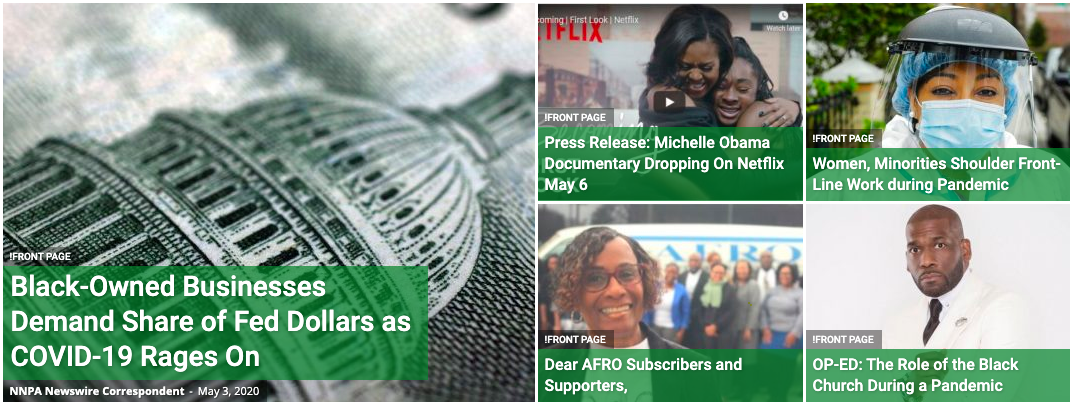A project of the Manship School of Mass Communication, LSU
COVID-19 Pandemic: Journalism, Inclusion and Diverse Perspectives

By Masudul Biswas
(UPDATED on May 15, 2020) - After reading this thought-provoking article, “A West Side house party exposes the disconnect between young Black residents, Chicago officials and the news during COVID-19 pandemic,” published by The Triibe, I decided to write this review or roundup piece on journalism, inclusion and diverse perspectives in the time of COVID-19 pandemic for the Media Diversity Forum.
The Triibe, a digital publication that is geared towards Black millennials in Chicago, ran the above-mentioned article. The Tribe writer Vee Harrison used a really powerful quote of Tink Purcell, an attendee in the West Side’s house party on April 25th, “‘I’ll stay in the house if you come build me a basketball court like you got in your house. Come put a zoo in my backyard. These rich people got things to do while they sit in the house. Us people that aren’t as rich as them, we don’t have nothing to do in the house.’”
In her interview with the Triibe, Purcell also mentioned that she was not aware that “Black Chicagoans were at higher risk of contracting and dying from COVID-19.” There is certainly a disconnect between young Black residents in Chicago, local officials and news outlets. As Black journalist in Chicago and MTV News host Dometi Pongo believes that young Black Chicagoans were not represented adequately in the pandemic news coverage. Pongo argues that news media needs to understand “‘what the news looks like to different people.’”
Another powerful quote of Illinois State Rep. La Shawn K. Ford, utilized by writer Harrison is, conveyed a distrust between black community and the state, “‘These are the very same people that have been disrespected by the government, the police, by the school system that they attend,’ Ford said. ‘Now we are saying that we expect them to do better, now that we’ve failed them in the city of Chicago?’”
Were mainstream media, such as network televisions, considering these perspectives when they were reporting on this house party? Was their coverage inclusive of above comments by Ford and Purcell?
It is, however, good to see that the Maynard Institute for Journalism Education has been organizing a series of webinar and publishing articles regularly since March on how to cover inclusive, accurate reporting during the time of COVID-19 pandemic. I found these resources very useful and practical for any news organization – perspectives and resources amid pandemic coverage and false equivalency and crisis reporting.
Roles of Ethnic and Community Media

Like the Tribe, other immigrant and ethnic media outlets are also serving information related to COVID-19 to their community members. Community perspectives are reflected in the pandemic coverage by these community news outlets.
For example, in the first week of May, news coverage in the online version of historically influential Black newspaper – The Afro – includes stories such as “Black-Owned Businesses Demand Share of Fed Dollars as COVID-19 Rages On,” “Women, Minorities Shoulder Front-Line Work during Pandemic” and “Op-Ed: The Role of the Black Church During a Pandemic.”
According to the Centers for Disease Control and Prevention (CDC), among the ethnic minority populations in the U.S., COVID-19 deaths was highest among African Americans (22.4%) as of May 13, 2020, followed by Hispanics or Latinos (16.2%).
This map is reflective of the data up to May 13, 2020.
This map is reflective of the data up to May 13, 2020.
According to the CDC, factors that influence racial and ethnic minority group health are: "living conditions," "working circumstances," such as "lack of paid sick leave" and being "critical workers," and "underlying health conditions and lack of access to care."
A research-based report by the Center for Community Media (CCM) at CUNY School of Journalism, published in early April, documented how a select group of ethnic news outlets were “finding ways to grow and effectively serve immigrant communities under threat” during the COVID-19 pandemic.
This CCM report also forecasts an “ad downturn” for these ethnic/immigrant media in the coming months. Hence, expanding audience base globally may not be enough for these news outlets to serve immigrants.
It is not clear whether or not ethnic or immigrant news outlets can qualify for the Google News Initiative’s Global Emergency Relief Fund for Local News. More information about this fund is available here.
Given the important roles ethnic and community media play in the immigrant community, New York City (NYC) Mayor’s Office of Immigration Affairs has been holding virtual roundtable through Facebook Live with community and ethnic media based in NYC “to ensure that critical #COVID19 updates are reaching our immigrant communities and New Yorkers with limited English proficiency.”
Challenges Now and Ahead
While reporting on COVID-19 pandemic, mainstream news outlets need to consider a “triple whammy” impact of COVID-19 crisis for employees of underrepresented or marginalized groups, as outlined in The Forbes’ article on “5 Ways Diversity And Inclusion Help Companies Before, During And After The Pandemic.”
One, the pandemic is already “having a disproportionate impact on health outcomes for people of color, people with disabilities and other marginalized groups.”
Second, job cuts due to pandemic disproportionately affected women and people of color.
Third, on the ground of funding shortage, many companies have begun to cut diversity and inclusion programs, “which they consider ‘nice-to-have’ and not central to their success.”
Originally Published on May 5, 2020.
Masudul (Mas) Biswas is Media Diversity Forum's site editor and web developer. Special thanks to the Forum's editor Victoria LaPoe for sharing an article that is cited in this piece.
Top